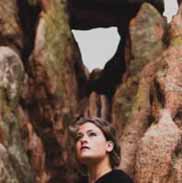Chapter 15 Study Guide Answers
Unlock all answers in this set
Unlock answersquestion
1. Identify the sequence and timing of the major events in the evolution of early life (ones described on slide), ending with the movement of the first life onto land.
answer
4500 B.C.-Origin of Earth 3500 B.C.-Oldest Prokaryotic Fossils 2000 B.c.-Oldest Eukaryotic Fossils 1500 B.C.-Origin of Multicellular Cells 530 B.C.- Life colonized land
question
2. Distinguish between spontaneous generation and biogenesis.
answer
Spontaneous generation: is the belief that life is formed from non-living things. This idea formed from occurrences that people had little knowledge of such as maggots appearing on meat. Biogenesis: is the creation of life from already living things. Biogenesis has been proved and is know the commonly accepted version of how life is created.
question
3. Know in detail the four stages of the hypothesis for the origin of life on Earth. a. Explain how natural selection would have affected these first pre-cells.
answer
Stage 1. Abiotic Synthesis of Organic Monomers -non-living synthesis of small organic molecules -amino acids and nucleotide monomers Stage 2. Abiotic synthesis of polymers -joining of the small molecules into macromolecules -proteins and nucleic acids Stage 3. Formation of pre cells -packaging all the molecules into pre-cells -pre-cells are droplets with membranes that maintained and internal chemistry different from the surroundings Stage 4. Origin of cell replicating molecules -eventually made inheritance possible
question
4. Describe the structure, function, and reproduction of prokaryotes.
answer
STRUCTURE -There are three prokaryotic structures -The spiral, cocci and bacilli -The cocci is spherical -The bacilli is rod shaped -and the spiral is spiral shaped -The prokaryotic cells often live in groups -Can attach to surface in large colonies called biofilms REPRODUCTION -Continuously copy DNA and divide -This is a process called binary fission
question
5. Know the types of nutritional diversity used by prokaryotes.
answer
-Prokaryotes exhibit all four modes of nutrition. -They can be Photoautotrophs(Sunlight is their energy source and CO2 is their carbon source), Chemoautotrophs(inorganic chemicals are their energy source and CO2 is their carbon source), Photoheterotrophs(sunlight is their energy source and organic compounds are their carbon source) or Chemoheterotrophs(organic compounds are both their energy source and carbon source)
question
6. Compare briefly the two groups of prokaryotic cells—bacteria and archaea. a. Describe three specific extreme environments in which members of archaea are found.
answer
BACTERIA -cell wall contains peptidoglycan ARCHEA - can live in more extreme environments -similar to eukaryotes 1. Halophiles extremist live in unusually salty habitats 2.Thermophiles extremist live in very hot environments 3.Acidophiles extremist live in acidic enviorments
question
7. Describe the ways that bacteria harm and benefit humans and ecosystems.
answer
HARM -bacterias can cause disease -biological weapons are created with bacteria HELPFUL -can be decomposers -fixes nitrogen
question
8. Describe the two main processes that explain how eukaryotic cells evolved.
answer
Membrane infolding Invasions of the host prokaryote were succesful because the host cell membrane infolded to surround the invading prokaryotic cells and as a result transport them into the cell. Membrane did not dissolve and thereby created a second membrane Endosymbiosis Two mutually beneficial invasions of a prokaryotic cell produce the mitochondria and chloroplast as eukaryotic organelles.
question
9. Describe and compare the four main categories of protists, grouped by lifestyle. Explain how these different groups impact our lives.
answer
Protozoans -live primarily by ingesting food -thrive in aquatic surroundings -live as parasites in animals -Flagellates, Amoebas, Apicomplexans and Ciliates are types of Protozoans -many of these types of Protozoans can cause serious disease to humans Slime Molds -similar to fungi lifestyle -weblike body -decomposer -parasites -use spores to reproduce -Two types are plasmodial slime molds and cellular slime molds Seaweeds -multicellular marine algae -cell wall has slimy substance for cushion against waves -consist of polysaccharides which humans cannot digest -can't be staple food Unicellular and Colonial Algae -photosynthetic protist whose chloroplasts support food chains in freshwater and marine ecosystems -components of plankton -examples are diatoms and green algae
question
10. Explain how multicellular life evolved from unicellular life.
answer
1. An ancestral colony formed and a cell divided so its offspring remained attached to one another. 2. Cells in the colony became independent and specialized, with different cell types becoming more efficient with tasks. Flagellated cells became mor specialized for locomotion while other assumed function like ingesting food. 3. Additional specialization among cells in the colony led to distinction in gametes and somatic cells



